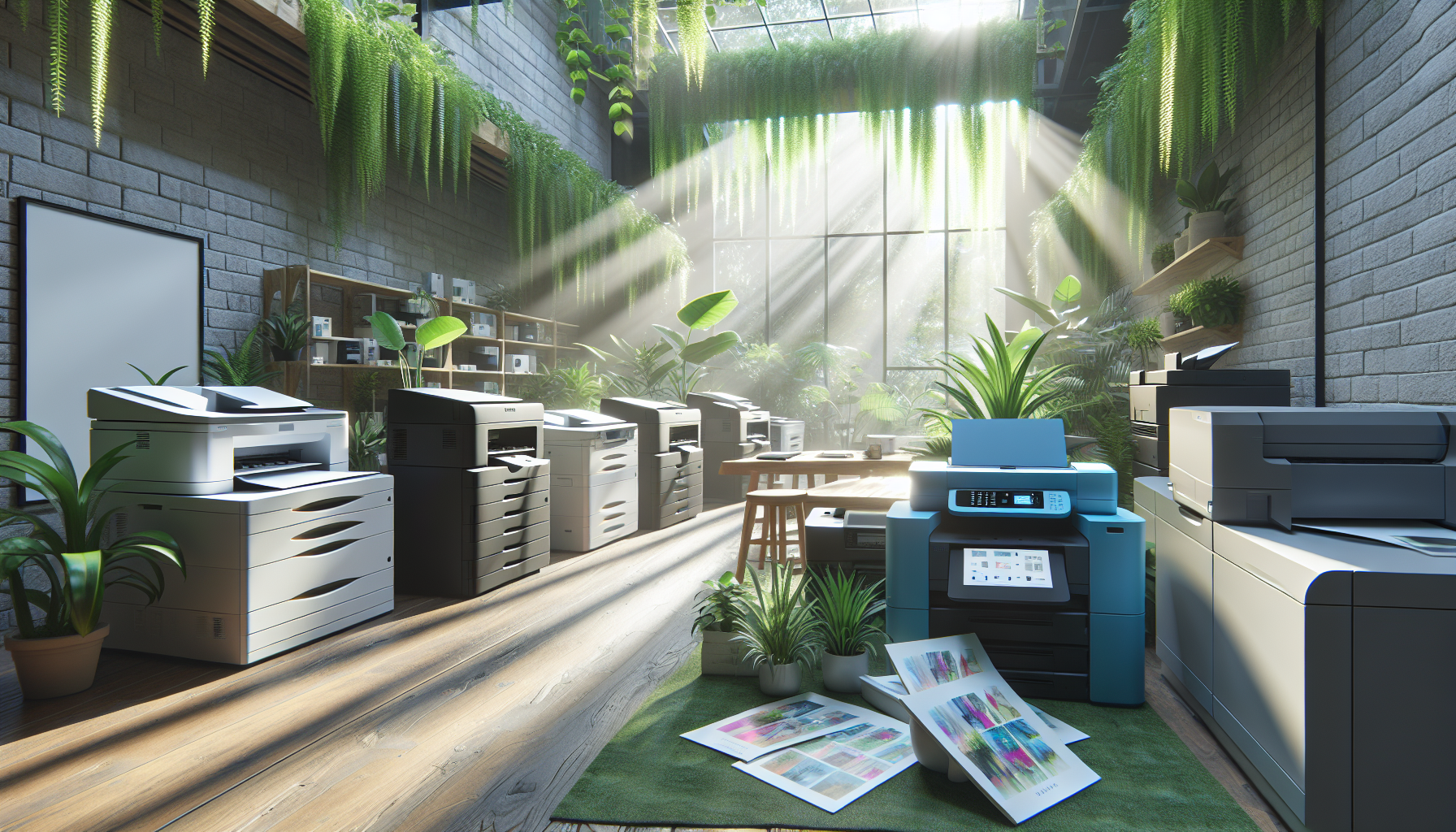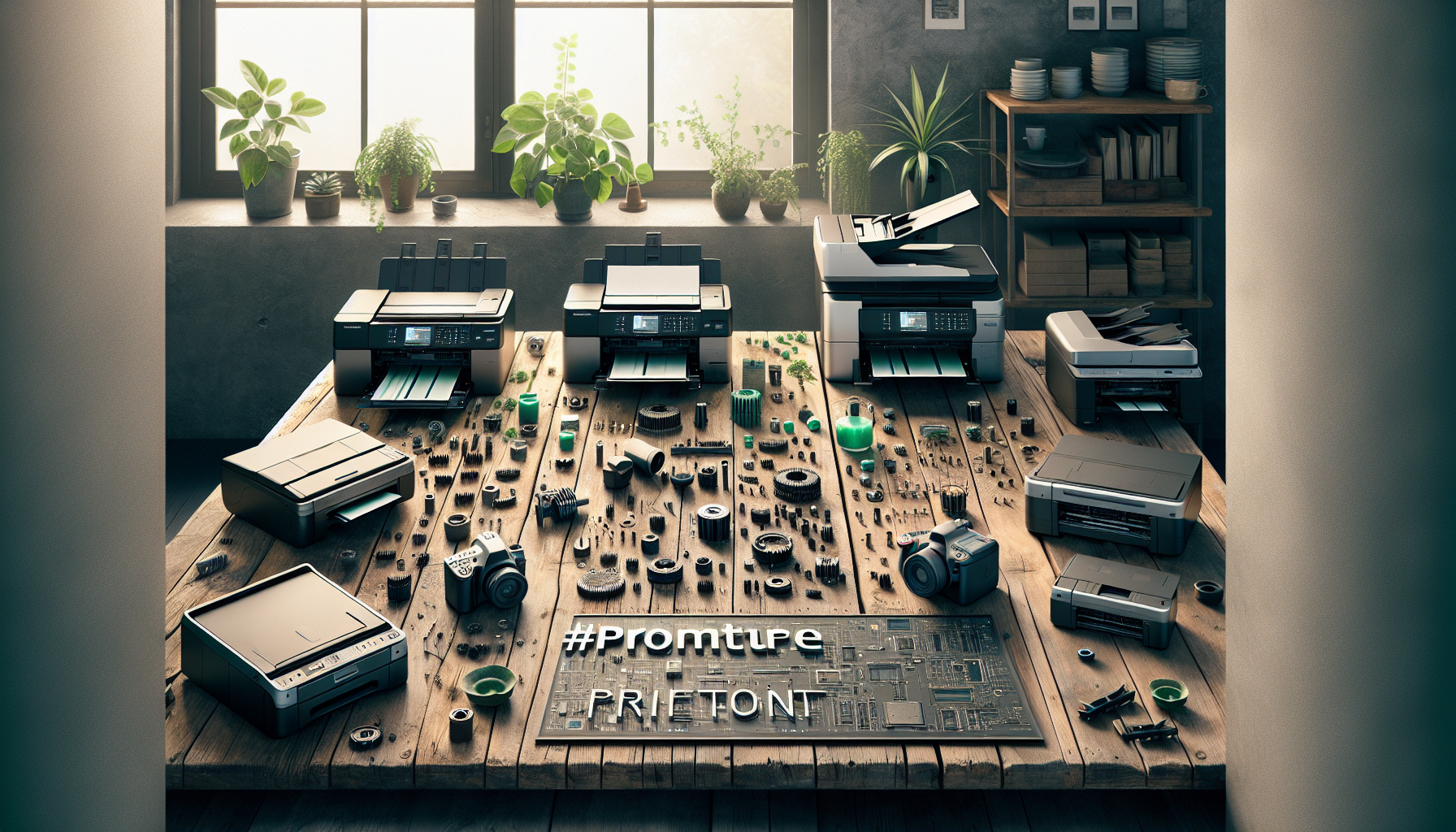Understand your printing needs
Choosing the right supplierprofessional printer is not a decision to take lightly, especially when your goal is to refine processes and improve efficiency within your organization. A keen understanding of your specific needs is the glue to a successful collaboration with the right technology partner.
Identify Your Printing Requirements
Before inquiring about latest innovations or attractive rates, determine the nature of your needs. Would multifunction printers, combining printing, scanning and often copy and fax options, meet your daily needs? Studies show that economic models in the €50 to €100 range can do the job very well for small businesses, depending on the expected volume of work.
On the other hand, for more significant needs in terms of volume and speed, investment in laser printers of higher quality would be wise. With a range of choices offered by reliable tests and comparisons, you could facilitate your search for the ideal device.
Maintenance and After-Sales Service, Keys to Sustainability
A device can be efficient, but what about its maintenance? Subscriptions, like Epson ReadyPrint, offer practical solutions to avoid worries such as refilling ink cartridges. This type of service illustrates the importance of choosing a supplier offering after-sales service and quality maintenance assistance.
Technological Innovations and 3D Printing
The rise of3D printing has opened up a range of possibilities for businesses. Whether you opt for an online 3D printing service or implement this technology within your business, it is essential to clearly discern your needs to select the appropriate service. Dedicated resources can guide your choices between physical or digital services.
Alternatives to Classic Office Printers
Dematerialization and increasing professional mobility invite us to think about alternatives to traditional office printers. Renting printers can be a wise option to benefit from the best equipment without increasing investment costs. Likewise, the cloud printing services or premises can be suitable solutions to efficiently manage your company’s printing workflows.
Engage with the Best Partner for Your Growth
Once you have clarified your printing needs, the choice of supplier naturally becomes more accessible. It is crucial to find a partner who will understand the importance of your growth and respond flexibly to your requirements. Innovation, technical expertise and a responsive customer service are essential assets to facilitate the dynamic evolution of your business.
Choosing a service provider is not just a question of cost or technology, it is above all a strategic decision for the future of your business. Considering a long-term collaboration with a supplier who recognizes both the impact of printing in your daily operations and your growth potential is the key to a successful partnership.
Take the time to view comparisons, review case studies, and closely evaluate vendor offerings. The investment in time spent researching the best options will pay off in the end by making the day-to-day management of your business easier and giving you the tools to grow and innovate.
Consider resolution and print quality

Precision and fine detail are essential criteria when it comes to optimizing professional printing systems. In a context where brand image and visual communication are of paramount importance, resolution and print quality should not be neglected. Indeed, a high-resolution document conveys a message of professionalism and seriousness, two essential values in the business world.
Print Resolution: A Quality Criterion
The print resolution, expressed in dots per inch (DPI), is a determining factor in the sharpness and clarity of a printed document. The higher the DPI number, the finer and more precise the details will be, contributing to better readability and a superior visual experience.
For text printing, a resolution of 300 DPI is generally sufficient to obtain a clear and professional result. However, for high-quality graphic prints, images or photographs, it is recommended to choose higher resolutions to ensure faithful reproduction of shades and details.
Set Print Quality as Needed
Print quality encompasses much more than just resolution. It also involves the ability of a printer to faithfully reproduce colors, depth of blacks and consistency of results on different types of media. Opting for printing equipment offering a wide color gamut and faithful rendering is essential for printed materials that stand out for their visual quality.
Online tools now make it possible to significantly improve the photo quality before printing. Using these tools, it is possible to correct colors, increase sharpness, and remove imperfections to ensure that each print best reflects the original intent of the design.
Advanced Printing Technologies for Uncompromising Results
Printing technology continues to evolve, with resin 3D printers coming in 2023 offering impressive resolutions for creating detailed and precise prototypes. Although different from traditional printing on paper, the principle of high resolution is also applicable, highlighting the importance of high precision in the world of professional printing.
Likewise, 3D printers often require adjustments to optimize the accuracy and tolerance of prints, which is crucial to ensure the functionality and aesthetics of models. These adjustments are just as relevant for traditional printers, where regular calibration and maintenance play a vital role in maintaining consistent print quality.
The Effect of Quality on Brand Perception
The visual impact of a printed document can strongly influence the perception of your brand or company. Just as a professional profile photo on LinkedIn can attract the attention of recruiters, high-quality documents can captivate attention of a potential client or business partner.
Ultimately, choosing quality printing equipment isn’t just about resolution; it’s a matter of strengthening your brand image and conveying reliability and excellence. Taking resolution and print quality into account when choosing your professional printer supplier is therefore a crucial step in raising the level of your printed communications.
By carefully studying the specifications and performance of the different options available, judiciously using image quality improvement tools and ensuring regular maintenance of your equipment, each print will turn into a real asset for your business.
Evaluate printing speed for your business

Select a Local Supplier for Optimal Proximity
Choose one professional printer supplier based near your business has invaluable advantages. Not only do you benefit from responsive customer service, but also support in the event of a breakdown or for regular maintenance of your equipment. This means that response times are significantly reduced, ensuring continuity of service that every successful company deserves.
Evaluate Printer Reliability and Performance
Comparisons of best multifunction printers of 2024 offer a glimpse of the most efficient hardware on the market. By taking these sources into account, you ensure your company acquires cutting-edge technology tools capable of manage effectively your print workflows. Are you particularly interested in yield ink cartridges, a crucial component for controlling your long-term costs.
Multifunction printers Current technologies must be versatile and energy efficient. By consulting a electricity purchasing guide, you can discover the models that will provide significant savings and reduce your carbon footprint.
Quality After-Sales Service
The ability to easily submit a dispute, in the event of a problem, is a crucial criterion when choosing a supplier. THE after-sales service must be accessible and competent. It is useful to have resources allowing problems to be resolved quickly and without unnecessary complications.
Rental Formulas and Financial Flexibility
Let’s consider renting professional printers, a wise choice for organizations that prefer to invest their capital elsewhere. Discuss with your supplier leasing options which can provide flexibility and scalability. A company that offers flexible payment plans is often a sign of a deep understanding of customers’ economic realities.
Consumables and Operational Cost
It is important to consider the inks and toners your printers will use. The article “What are the best printer inks? Comparison 2024” can guide your choice towards quality and economical consumables. A supplier worthy of the name must offer you solutions that reconcile print quality And high yield.
Technical Expertise and Personalized Support
A good supplier does more than just sell products; it also offers expert support. This includes tips on choosing your hardware, as shown in “How to choose your computer“, but also recommendations to optimize your space and your work processes. Customization extends down to the details of the workflow of your printer, ensuring seamless integration into your business.
Your professional printer supplier is a partner your business should be able to rely on. By following these recommendations and carefully weighing the various aspects discussed, you will put your business on the path to efficient document management and a increased productivity. Take the time to analyze each proposal and ensure that your final choice perfectly matches your needs, your budget, and your expectations in terms of support and scalability.
Compare printer compatibility with different media

When the time comes to choose a professional printer, it is crucial to consider compatibility with various printing materials. Thanks to technological advances, companies have at their disposal a wide range of printers capable of handling different media, from classic papers to the more innovative materials used in 3D printing.
Professional Printers for Traditional Media
For traditional supports such as paper, cardboard or labels, it is imperative to move towards multipurpose printers, capable of adapting to the diversity of printing needs. Models designed for the Mac and MacBook platforms typically offer excellent compatibility and fit seamlessly into a professional Apple environment, ensuring a smooth transition for Mac users (source: TechRadar).
The Era of 3D Printing: Compatibility with Innovative Materials
3D printing has revolutionized the professional world by making it possible to create objects with unparalleled precision. 3D printers offer the choice between metal, resin and plastic, bringing a new dimension to creative and engineering possibilities (source: 3D Primer). However, care must be taken to select a model compatible with the desired material. For example, resin 3D printers will not be suitable if the goal is to print in metal and vice versa.
Dual Extrusion 3D Printers
3D printers dual extrusion are a boon for professionals looking to print complex objects with multiple materials or colors simultaneously. This technology represents an undeniable asset for increasing efficiency and creativity within production processes (source: 3Dnatives).
Slicers: Optimizing 3D Printing Compatibility
At the crossroads between hardware and software, slicers play a key role in preparing 3D models before printing. Choosing a slicer adapted to your resin 3D printer ensures better compatibility and higher quality printing results (source: 3Dnatives).
The compatibility of theprofessional printer with various media is a fundamental consideration. Whether it is paper support for traditional documents or more specific materials such as those used in 3D printing, each company must evaluate its needs in order to make an informed choice. It is therefore recommended to consult the technical specifications of the devices and take into account feedback and expert opinions to identify the best options available on the market.
Analyze the total cost of ownership of a professional printer
When it comes to purchasing a new professional printer, the decision goes well beyond simple purchase price. THE total cost of ownership (CTP) encompasses a multitude of factors which, when neglected, can turn an apparent bargain into an unexpected and substantial expense. Analyzing CTP in depth is crucial for any company that wants to optimize its resources while ensuring efficient productivity.
The purchase price: the tip of the iceberg
Beyond the initial sum paid for the acquisition of the equipment, the purchase price is only one element of the overall cost. However, this one often attracts all the attention. It is true that some offers on the market may seem attractive at first glance, but a careful examination of the long-term expenses is essential to avoid unpleasant surprises.
Consumable and maintenance costs: the continuous flow
Ink or toner cartridges represent a significant portion of the TCO. Some comparative highlight the true cost of using printers. Likewise, regular maintenance is essential to ensure the proper functioning of the device, but it comes at a cost. Added to this are possible repairs following breakdowns or wear, expenses which accumulate over time.
Sustainability and obsolescence: a strategic choice
Printer durability is a key element that directly influences TCO. Planned obsolescence, a hot topic raised by sites such as GreenIT, can lead to frequent and costly hardware renewals. Selecting equipment designed to last means reducing replacements and, therefore, reducing expenses.
Preventive and corrective maintenance: a cost schedule
Printer maintenance is something that may seem tedious, but managing it effectively is crucial. Plan preventive interventions can help avoid major and costly repairs. Corrective maintenance, while unavoidable at times, should be minimized through reliable equipment and proper maintenance.
Optimization of printing processes
The cost per page is often an indicator put forward, but to obtain an overall vision, it is also necessary evaluate print workflow management of the company. A printer that incorporates smart features and advanced connectivity options can facilitate more efficient document management, saving time and money.
Renting a professional printer: an alternative to consider
Equipment rental can appear to be an advantageous solution for companies wishing to high performance equipment. It allows you to control costs by benefiting from cutting-edge equipment without high initial investment. Additionally, rental contracts often include maintenance services and consumables, making budget management more predictable.
In conclusion, the total cost of owning a business printer is about more than just the initial outlay. To make an informed choice, you must take into account all the elements that make up the life cycle of the device. Savvy businesses, such as a small business looking for optimal solutions, will benefit from a detailed TCO analysis to select the printer that will meet not only their current needs, but also their long-term financial strategy. Resources such as “Which printer for a small business?” can be excellent starting points for exploring these options.


Leave a Reply